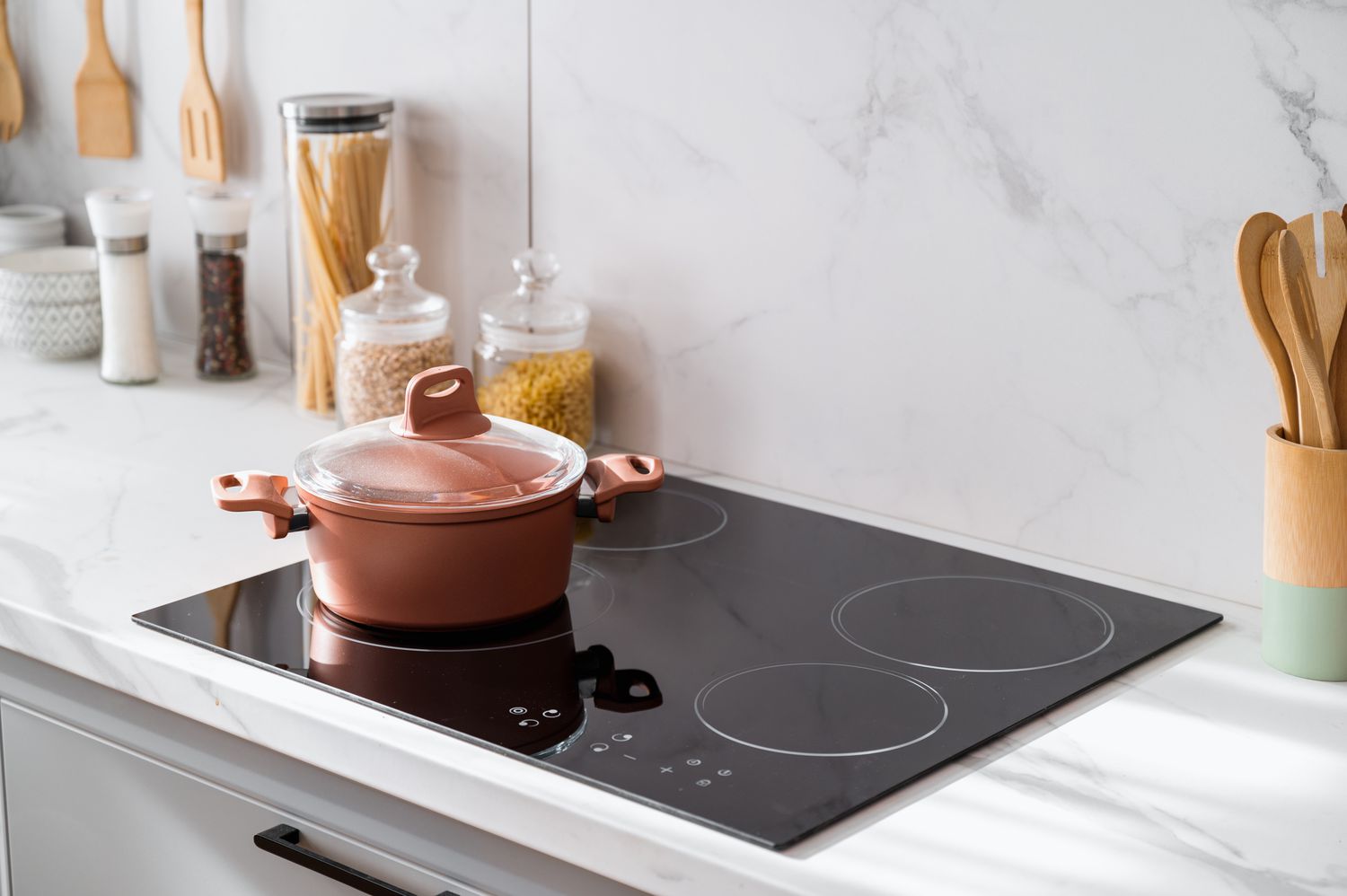What is an Induction Hob?
An induction hob is a cooking surface that uses electromagnetic energy to directly heat cookware. This type of hob generates a magnetic field that interacts with the metal in the pot or pan, creating heat directly in the cookware rather than on the hob itself. This leads to faster cooking times and greater energy efficiency compared to traditional methods.
Explore Our Induction Cooktops
How Induction Hobs Work
Induction hobs rely on magnetic induction to generate heat. Below the glass surface of the hob, a copper coil creates an electromagnetic field when turned on. This field generates an electric current within ferromagnetic pots or pans, heating the cookware while keeping the hob surface relatively cool.
Key Benefits of Induction Hobs
- Faster cooking times: Heat is generated directly in the pan, making induction hobs incredibly efficient.
- Energy efficiency: Less energy is wasted since heat is directly transferred to the cookware.
- Safety: The hob surface remains cool to the touch, reducing the risk of burns.
- Precision: Temperature adjustments are immediate, allowing for precise control of cooking temperatures.

What is an Electric Ceramic Hob?
Electric ceramic hobs are a common choice in many kitchens. They feature a smooth glass surface with electric heating elements located beneath the glass. When turned on, the elements heat up and transfer heat through the ceramic surface to the cookware.
Explore Our Electric Ceramic Hobs
How Electric Ceramic Hobs Work
Electric ceramic hobs operate by passing electricity through metal coils located beneath the glass surface. These coils heat up, and the heat is conducted through the ceramic glass surface to your pans. Unlike induction hobs, the entire cooking zone becomes hot, including the surface of the hob.
Key Benefits of Ceramic Hobs
- Sleek design: The smooth surface offers a modern and stylish look for any kitchen.
- Easy to clean: The flat glass surface makes spills easy to wipe away.
- Affordable: Ceramic hobs tend to be more affordable than induction hobs.

Key Differences Between Induction and Ceramic Hobs
Speed and Efficiency
Induction hobs offer faster cooking times because heat is generated directly in the cookware, making them highly efficient. Ceramic hobs, on the other hand, take longer to heat up as the heat must pass through the glass surface and then to the pan.
Energy Consumption
Induction hobs are more energy-efficient, as they waste less heat during the cooking process. In contrast, ceramic hobs tend to consume more energy due to the heat being lost from the hob surface after cooking.
Cooking Precision
With induction hobs, temperature adjustments are instant, providing precise control over your cooking. Ceramic hobs, however, have a delayed response time when adjusting heat, making it harder to achieve exact cooking temperatures.
Safety Considerations
Induction hobs are known for their safety features. Since only the cookware heats up and the hob remains cool, there is less risk of burns. However, induction hobs require specific ferrous cookware to work effectively. Ceramic hobs, while easy to use, have a higher risk of burns as the surface remains hot even after turning off the heat.
Design and Aesthetic Differences
Both types of hobs offer a sleek, smooth appearance, but induction hobs tend to feature more advanced designs with touch controls and high-tech features like timers and sensors. Ceramic hobs, while still stylish, usually have simpler, more traditional designs.
Cost Comparison
Induction hobs typically come with a higher upfront cost due to their advanced technology, but their energy efficiency can save you money in the long run. On the other hand, ceramic hobs are more affordable initially but may lead to higher energy bills over time.
Durability and Maintenance
Induction hobs are generally more durable since the cooking surface remains cooler, reducing the risk of cracks and heat damage. However, they require specific cookware and can be more expensive to maintain if repairs are needed. Ceramic hobs are easier to clean but are more prone to scratches and damage from high heat or heavy cookware.
Which Hob is Best for Your Kitchen?
When deciding between an induction hob and a ceramic hob, it comes down to your cooking style, energy efficiency needs, and budget. If you want fast, precise cooking and are willing to invest in compatible cookware, an induction hob is likely the better choice. However, if you're looking for an affordable option that still offers a stylish design, a ceramic hob might suit your needs better.
Conclusion
Both induction and electric ceramic hobs offer unique benefits. Induction hobs provide faster, more energy-efficient cooking, while ceramic hobs offer simplicity and a lower initial cost. The right choice depends on your individual kitchen requirements, cooking preferences, and long-term budget considerations. Evaluate your needs, and you'll be well on your way to making an informed decision.
FAQs:
1. Can I use any type of cookware on an induction hob?
No, induction hobs require ferromagnetic cookware, such as cast iron or stainless steel with a magnetic base. If a magnet sticks to the bottom of the pan, it will work on an induction hob.
2. Are induction hobs more expensive to maintain than ceramic hobs?
Induction hobs are generally more expensive to purchase and repair due to the advanced technology, but they save on energy costs over time. Ceramic hobs are simpler but may need more frequent cleaning and are prone to scratches.
3. Do ceramic hobs cook slower than induction hobs?
Yes, ceramic hobs take longer to heat up and cool down compared to induction hobs, which heat cookware almost instantly.
4. What are the safety advantages of induction hobs?
Induction hobs are safer because the hob itself remains cool while only the cookware heats up, reducing the risk of burns.
5. How can I clean a ceramic hob without damaging it?
Use a soft cloth and a ceramic hob cleaner. Avoid abrasive materials or harsh chemicals, as they can scratch or damage the smooth surface.


Dejar un comentario
Todos los comentarios se revisan antes de su publicación.
Este sitio está protegido por hCaptcha y se aplican la Política de privacidad de hCaptcha y los Términos del servicio.